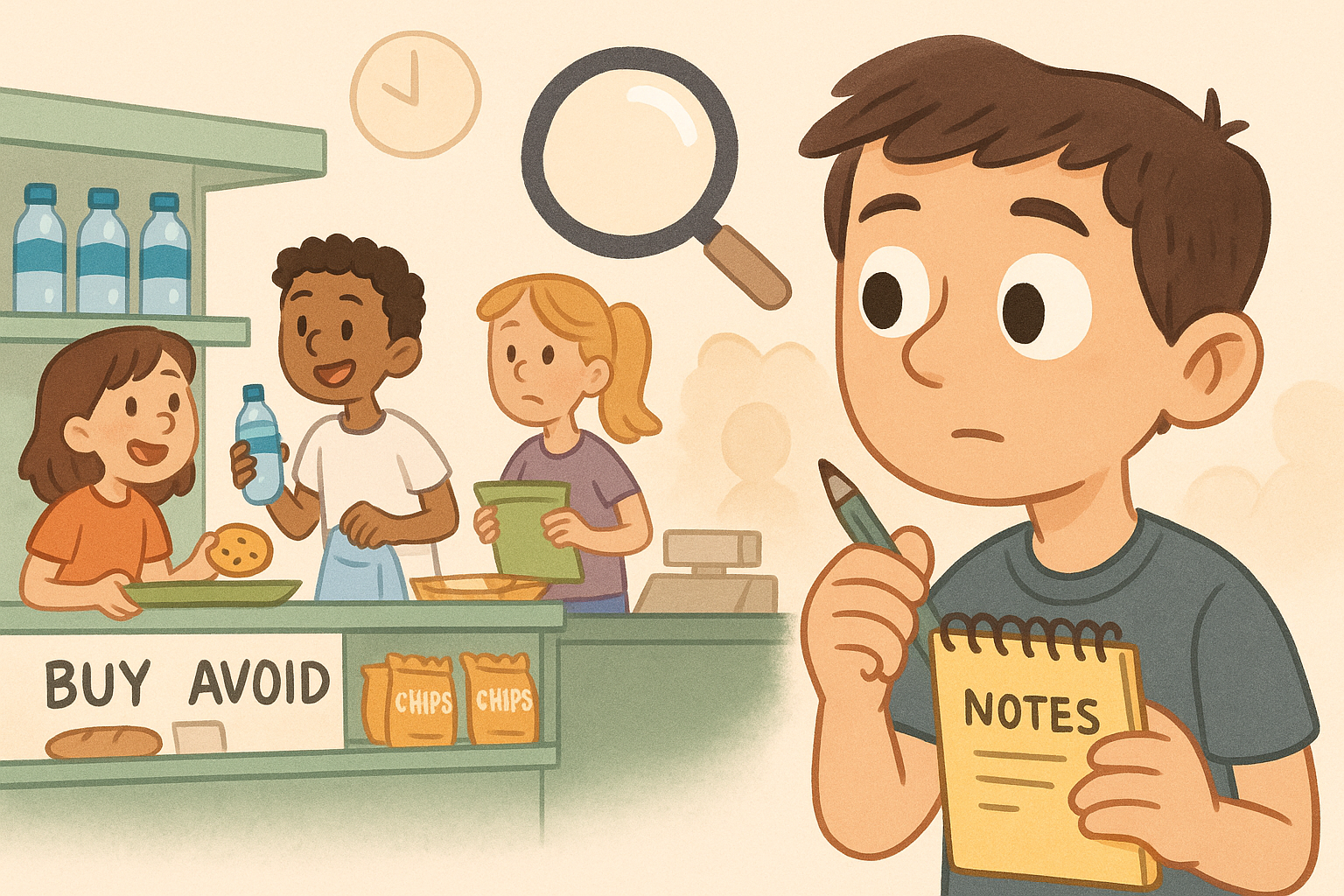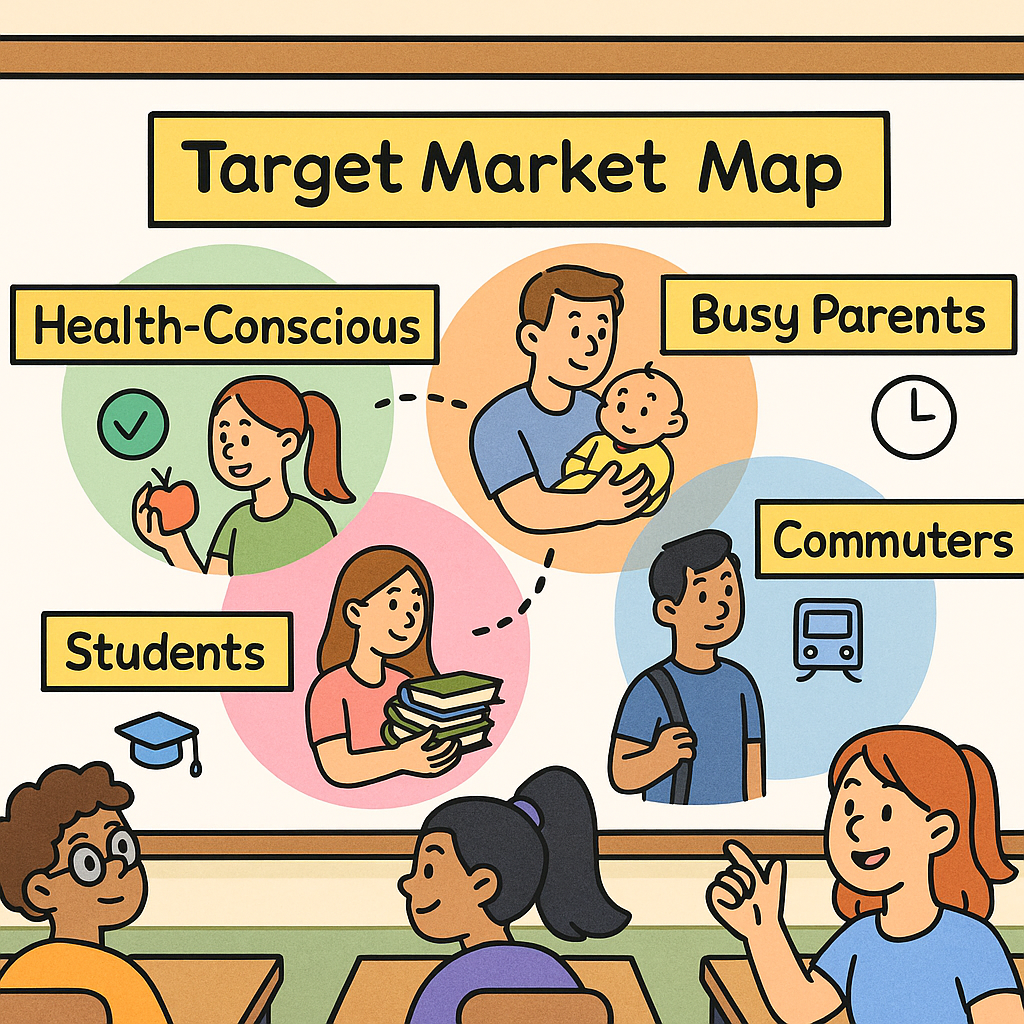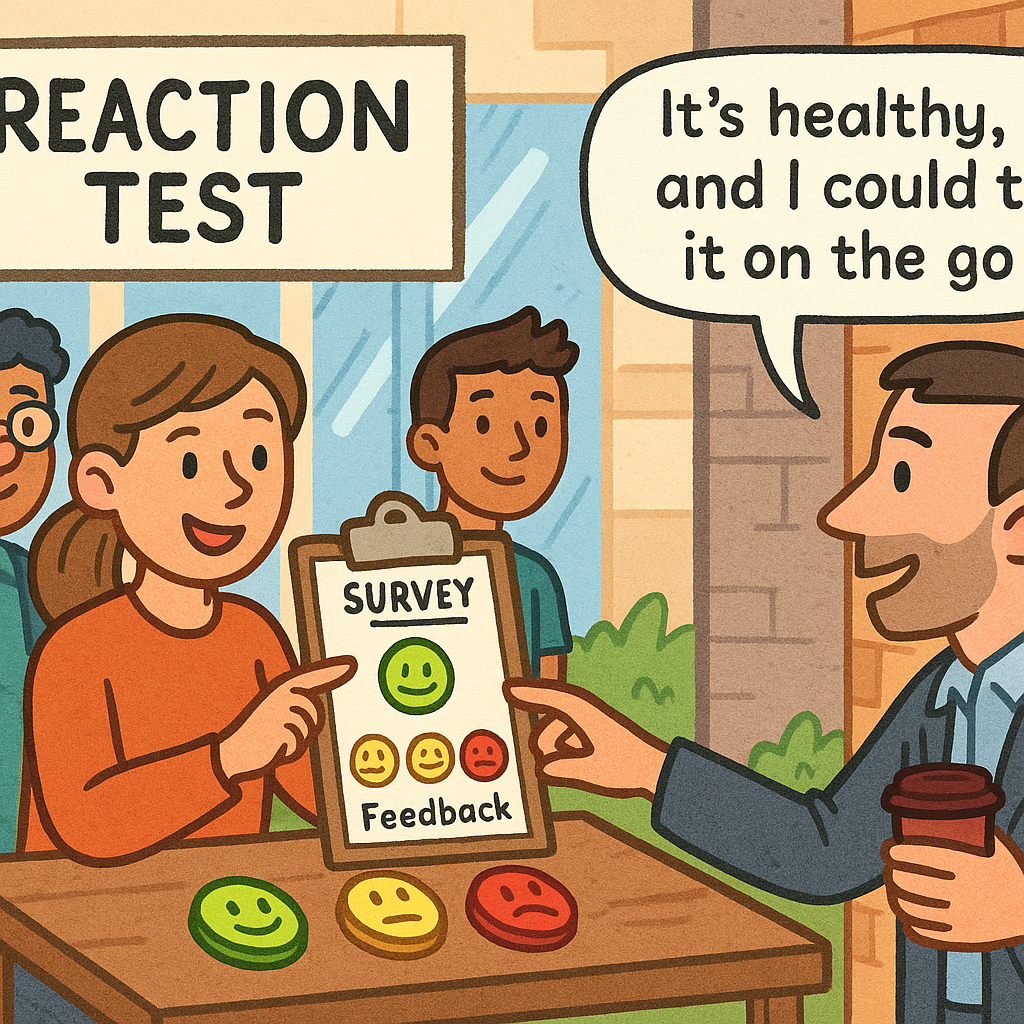🧭 Week 2 – Market Research Basics
Now that you have your idea, it’s time to see if the world agrees with you.
Market research isn’t about boring numbers — it’s about listening, observing, and understanding people.
In this week, you’ll learn to think like a detective:
Who really needs my idea?
Why would they choose it?
And what already exists out there?
🕵️ Step 1 – See the World Like an Investigator
Entrepreneurs don’t guess — they watch.
Go out (or online) and observe.
If your idea is for:
- a snack stand → watch what students buy most.
- a study app → ask how friends manage homework.
- an eco product → check what packaging people pick.
Take notes — not judgments.
You’re collecting clues.

Market research starts with observation — quiet moments often reveal what people truly want.
💬 Step 2 – Ask Smart Questions
You don’t need fancy surveys.
Sometimes one honest conversation is worth 100 data points.
Try asking:
- “What do you like about [current option]?”
- “What’s annoying about it?”
- “If you could fix one thing, what would it be?”
Keep it short. Listen more than you talk.
💡 Tip: Don’t pitch your idea yet. Just learn.
👥 Step 3 – Find Your “Who”
Every idea has a target audience — not “everyone.”
If you sell lemonade, your target isn’t the whole school — it’s thirsty people between classes.
Define your audience with 3 simple questions:
- Who are they? (age, habits, lifestyle)
- Where are they? (school, online, community)
- What do they care about? (price, fun, health, time)

When you know exactly who you’re helping, decisions become easier — your idea gains direction.
🔍 Step 4 – Check the Competition
Even if you think your idea is unique — someone, somewhere, has tried something similar.
That’s good news: it means the market is real.
Look for:
- Who already does something like this?
- What do people like about them?
- What do people complain about?
Use reviews, YouTube videos, or even TikToks.
Write down patterns — they’ll help you stand out later.
🧩 Step 5 – Validate with Real Reactions
Now test your idea quickly:
- Describe it in one line.
- Show it to a few people.
- Watch their faces.
Do they smile, nod, ask “where can I get it?” — or look confused?
That’s your first market test.

Reactions tell you what research can’t — excitement or confusion are early market signals.
🧠 Example: “EcoBottle”
Idea: reusable bottles for students with built-in reminders to drink water.
Research results:
- Students liked the eco part.
- They found “reminder” apps annoying.
- Most cared about design and color, not features.
Lesson learned: what people say they want ≠ what they pay attention to.
That’s why we test early.
✅ Your Week 2 Challenge
Pick one idea you created in Week 1.
- Watch how people behave related to that topic.
- Talk to at least three of them.
- Compare what you learned.
Then, write one short paragraph:
“I learned that my audience is ____. They care most about ____, and I could improve my idea by ____.”
That’s your first real market insight.
🧭 Coming Next
In Week 3, you’ll organize your findings into a simple business plan — turning ideas and research into a clear structure.
👉 Continue to Simple Business Plan →
📝 Try this today
Watch how people behave in places related to your idea — school cafeteria, online shops, or social media. What do they choose? Why?
Talk to 3 people from your target group. Ask what they like, what frustrates them, and what could be improved.
Search for 2–3 similar ideas or products online. What do they do well, and what could you do differently?
Lesson Progress
Module: entrepreneurship · +0% upon completion